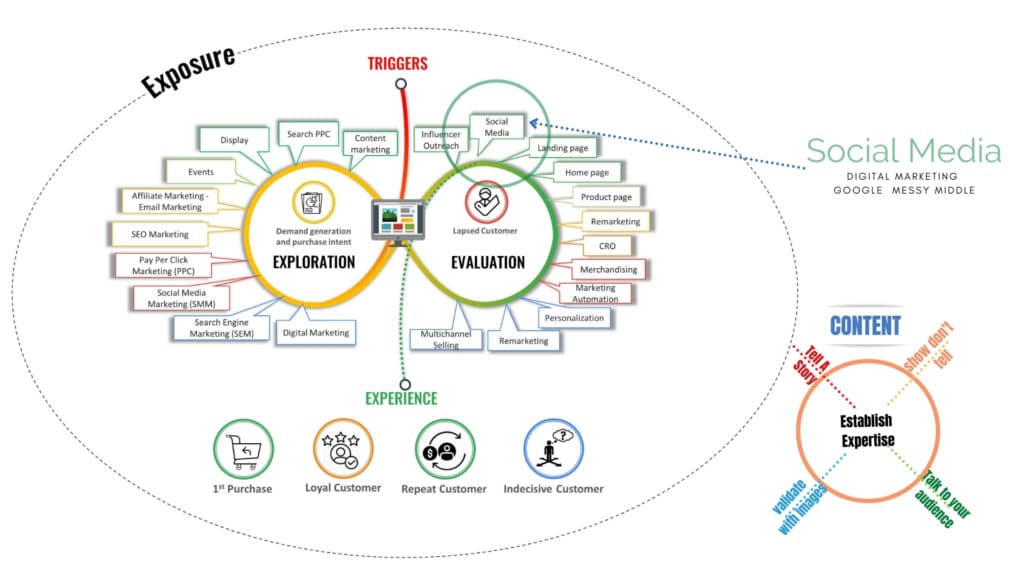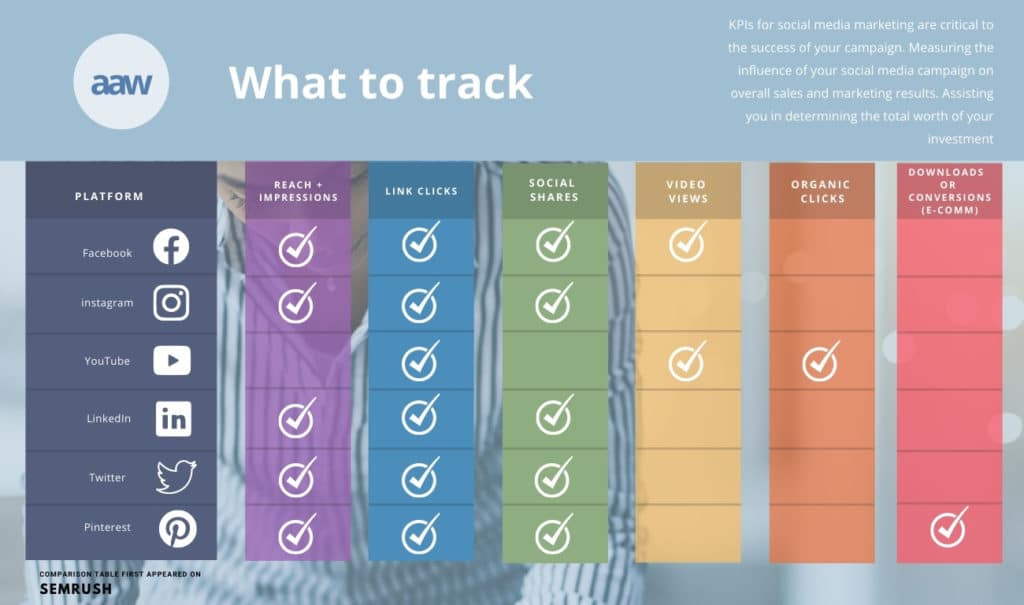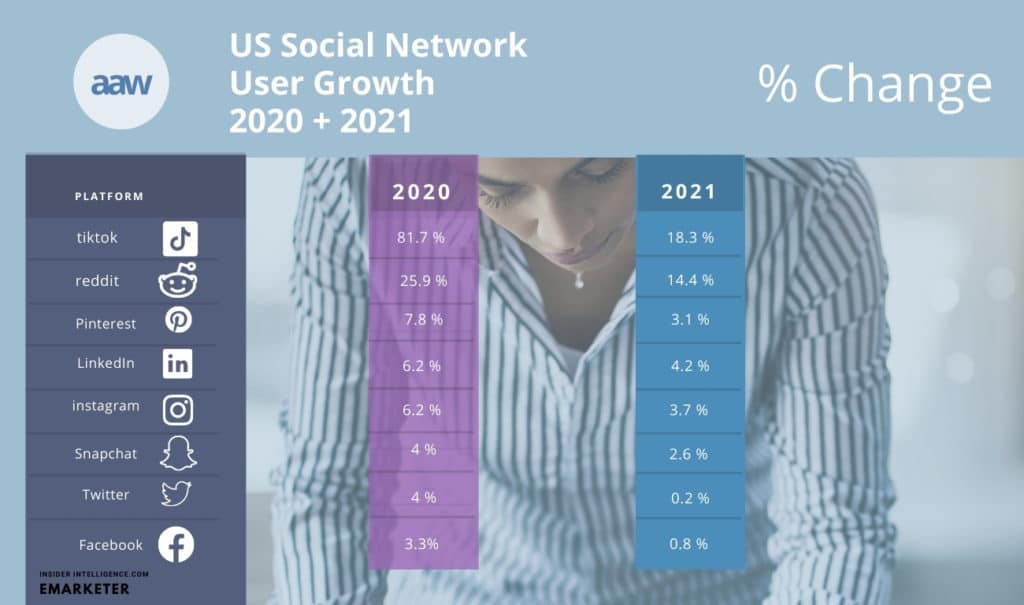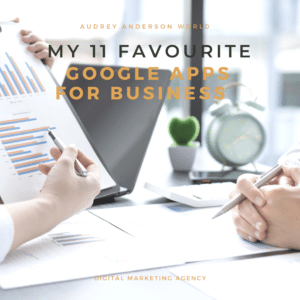
Lash Serums That Work My Favorite – 2023 Review
Lash Serums That Work and are my favourite – A Review We may get paid a commission if you buy something after clicking on one of our affiliate links here
Social Selling Strategy Ecommerce For WordPress


A-Brands best friend may indeed be social media. Professionals that excel at social selling, according to LinkedIn, include:
Is social media marketing for ecommerce for WordPress the same as social selling or social commerce? No, not exactly. The widest phrase of the three, social media ecommerce marketing, can encompass social commerce and social selling features.

Ecommerce Categories
In general, firms can be classified into three types of ecommerce models:
COVID-19 Drives Ecommerce Growth in 2020.
COVID outbreaks around the world propelled customers online to record heights. By May 2020, ecommerce transactions had reached $82.5 billion, a 77 per cent rise from the previous year. Using regular year-over-year gains, it would have taken four to six years to reach that figure.
Consumers have shifted online to make purchases that they would regularly make in stores, such as food and household items, clothing, and entertainment. Many customers said they would continue to shop online until a COVID-19 vaccination becomes available.
It is useful if we review the definitions:
Social commerce the Brand new way of selling products or services directly on social media platforms such as Facebook Shops, Instagram Social Selling Shops, Product Pins, and other native social media shopping solutions.
Social selling is the practice of identifying, connecting with, and nurturing sales prospects through social media.
Social media Ecommerce For WordPress Marketing – is Building brand awareness, advertising, community management, social customer service, social listening, competitive analysis, social commerce, and social selling are all examples of social media ecommerce marketing.
Fundamentally two Ecommerce WordPress Plugin’s I am regularly using. The Best WordPress Ecommerce Plugins and Rivals, my two top recommendations for a powerful eCommerce platform for WordPress users.
Increasing the effectiveness of your Social Selling Strategy by promoting your products through free listings and running Smart Shopping ads to target engaged shoppers across Google. (This is one of the reasons I like the WP Shopify API.). Using an Ecommerce platform that has a relationship with Google for Ecommerce is advantageous.
WooCommerce is the most popular eCommerce plugin for WordPress. It is also the world’s most popular eCommerce platform. My bugbear is the scalability on this platform.
If you want a robust platform without dealing with technological concerns, Shopify is the way to go.

Free Consultation – SEO, Local Google My Business Digital Marketing, Ecommerce For WordPress, PPC,

Social selling is a selling strategy leveraging social media platforms to improve a business sales cycle and customer experience. Executing a successful social selling strategy, Brands or Professionals need to know their market.
Needing to understand which social media platforms you can leverage to build stronger customer relationships.
Brands or Professionals also need to develop a shared understanding of each social network’s value proposition and how to best use it to their advantage. What are the four key components of a social selling strategy?
1. Appointing someone as your lead social strategist.
2. Developing a defined sales process.
3. Follow the golden rule of marketing.
4. Always making time for your customers.
Creating an Instagram channel will not help you reach out to them if your customers spend their time on TikTok. Defining your target as accurately as possible will aid you in determining where they spend their time online.
Starting with your existing client personas and reach each of them via their online social sites. The more proactive and specific you are in the initial stage will see you achieve the results you want.
Considering these questions will improve your results.
These questions serve as a starting point for deciding which networks to employ.
Find real-life consumer profiles and observe how they engage with others online for the best estimates to these questions.
Taking Stock of Your Brand or Industry: Which Channels Are Compatible With My Brand/Industry Values?
Being decisive and thinking about your brand and your industry, and the channels which would best suit you
Not all social media outlets are a good fit for your company, sector, or the type of material your audience craves–or that leads them to convert.
If you are a B2C e-commerce beauty firm, the visual interfaces of Instagram and Pinterest will help you show off your products better, attract the right female audiences, and provide you with more creative freedom in terms of content development. Not to mention Instagram’s and Pinterest’s e-commerce-friendly features like product labelling, price, and a website connection.
Consider the following:
Analysing Existing Traffic Sources for Your Brand: Which Channels Are Bringing In The Most Traffic?
If you have a well-established brand, your traffic analysis will assist you immensely in helping you determine which networks are already responding favourably to your products/services.
Your Google Analytics Social & Network Referrals Search report gives you a fast snapshot of which networks drive the most traffic to your site.
If you were contemplating opening a Pinterest account but discovered that LinkedIn generates considerably more traffic and conversions, you should either build a new presence there or increase your publication frequency.
Consider this: Which social media channels drive the most traffic to my website?
Examining your competition is added step that is beneficial.
Determine the channels your competitors are using productively and undertake additional research into the effectiveness of their social media approach, which will be profitable.
If some channels are not functioning well for a number of your competitors, these may be networks in which you shouldn’t invest resources.
This simple process can provide some of the most significant insights while also saving you and your team from making costly blunders.
Consider this: What channels do your rivals use?
Starting with the endpoint or goal at the front of your strategy session
The idea of having a Social Selling Strategy has been a profoundly discussed procedure for Brands, Businesses and Professionals.
Nonetheless, it’s no surprise that social selling is popular, especially given the ongoing expansion of social media use. At this point, any organisation may continuously locate their audience by utilising one or more of the major social media players.
In fact, more than 56% of internet adults use more than one social media network, and this figure will undoubtedly rise in the coming years. (Wordstream). Formalised adverbial adverb
While the topic of social selling has cooled a little, it is more vital than ever before and a practice that all businesses must embrace.
Even though many firms have implemented a social selling strategy or are searching for a more formal programme to adopt, not all are necessarily effective.
Setting realistic social media goals.
By the way, the word “realistic” is capitalised. We advocate focusing on modest goals that will help you scale your social efforts sensibly and economically.
The following are some examples of goals that businesses of all sizes and kinds can pursue.
Boost brand awareness. This entails publicising your name. Avoid just releasing promotional messaging to establish true and long-lasting brand awareness. Instead, prioritise information that highlights your personality and values.
Produce leads and sales. Followers will not make social purchases by accident, whether online or in-store. For example, are you concerned with informing customers about new items and promotions?
Increase the size of your Brand’s audience. Bringing in new followers entails figuring out how to introduce your brand to people who haven’t heard of you before.
Growing your audience also entails identifying the most important debates about your company and industry. It’s nearly impossible to sift through your social channels if you’re not watching or listening for specific keywords, phrases, or hashtags. Keeping an eye on these conversations allows you to reach your target demographic far more quickly.
Increase community involvement. Investigate techniques to pique the interest of your current followers. Experimenting with messaging and content is essential. Does your Brand, for example, encourage user-generated content and hashtags?
Even something as easy as asking a question might raise your likelihood of engagement. Customers might be your most ardent supporters, but only if you give them something to do.
Increase traffic to your website. It’s not too difficult. If you’re determined to generate leads or visitors to your website, social media can help. Whether through promotional posts or social ads, keeping an eye on conversions and URL clicks will help you better evaluate your ROI from social media.
Any combination of these objectives is permissible, and it can also help you better identify which networks to target. When in doubt, make your social media marketing approach basic rather than muddled with too many goals that could confuse you. Please choose one or two and stay with them.
Understanding that both outbound prospecting and inbound marketing is beneficial for executing a successful social selling strategy in your Business.
Both of these phrases might be certainly familiar to you, but in the context of social selling, we shall describe them as follows.
Outbound Prospecting: According to Kurt Shaver, Chief Sales Officer and Co-Founder of Vengreso, every social selling story has two sides.
The first step is to gather intelligence and learn as much as possible about your consumer base, which is referred to as ‘outbound prospecting.’
Which is the act of establishing a pipeline of leads through content. Most sales teams are already learning about their consumer bases through sites like LinkedIn and Twitter.
The difficult element, however, is the process of developing an inbound marketing system.
This is because the process of discovering, curating, and sharing content can take up a large portion of a person’s day. Sales leaders who are quota-driven will likely struggle to reconcile their short-term and long-term objectives.
While Social Selling is advantageous in closing more deals, the process is far more complex. As a result, it is critical for CEOs, team leaders, and managers to clearly define team goals and company-wide goals.
I am not bat shoot crazy to imply that social selling involves more than just closing deals because of brand awareness and revenue. Growth is also necessary.
Effect of keeping track of the following:
Revenue and closing transactions are extremely valuable, but having more conversations, getting prospects involved with the content and assets, trust will boost the overall Business score.
These objectives should be equally vital because focusing on just one area would leave you missing the broad picture of your social marketing strategy.
Before launching a social selling programme in your company’s many departments, everyone must understand the overarching strategy.
Social selling has become an extremely valued piece strategy for organisations to embrace in recent years, although it is still relatively new to most employees.
Even though your company’s aims and vision for the social selling programme are well stated, you do not want to open the doors to everyone who lacks formal education.
If your employees are unsure about the significance of your social selling strategy, they are entering the situation blindly and without a complete grasp of the value, they may give.
Even if most of the individuals involved understand it, each company’s programme will have a unique twist that will necessitate some training.
Before investing in a social selling programme, you should build the foundation to educate your staff via guidelines, internal blog posts, webinars, and even training sessions.
A trusted social selling partner or consultant can also assist you in developing your team education blueprint.
A successful social selling plan might be time-consuming, but the time and effort will be well worth it once the results begin to appear in your favour.
The problem is that many employees who will (and should) participate are preoccupied with their own daily activities and have little time.
While sales teams will be the prime candidates for social selling, other employees and departments must also be included.
According to a Nielsen survey, 83 per cent of people trust recommendations from friends and family, which is why firms should incorporate other employees in the programme.
Employees do not have time to comb through email distribution lists and share everything that your team publishes, no matter how much they want to establish their personal brands and reputations as thought leaders. Your team members, on the other hand, desire to be involved.
This is a recurring issue for social media and community administrators. That is why social selling software systems such as EveryoneSocial exist.
Now that you have an outlet that can manage all your social selling programme will need in one spot, your team is more equipped. Time is saved, and employees are encouraged to become more involved and are willing, active participants.
However, a few programmes can help you improve your social selling outcomes, such as Owler and Klout, to name a few.
Your social selling initiatives should strive to make it as simple as possible for your staff to discover, share, and engage with exceptional content.
Content is king. And your social media channels are the next best thing to a newspaper. You need a content strategy that includes a diverse set of product and industry-specific blog posts to generate the interest of potential customers.
What kind of content do you need to produce? Here are some suggestions:
Why is this the ideal strategy to use? By researching the target market, you can produce a blog post that will pique their interest in your product. This will allow you to educate them, present your credentials and then, create a conversation.


How to Execute Your Social Selling Strategy
Creating (and curating) interesting social media material.
There are no surprises here. Any content is the foundation of your social media marketing campaign.
Based on your aim and brand identity, you should have a decent sense of what to post at this point. You’re presumably confident in the networks you’ll cover as well.
But what about your content marketing strategy? Here are some ideas and inspiration to get you started.
The usefulness of adhering to content topics
You’ve probably seen a post from a specific brand that just feels like, well, theirs.
Many organisations rely on the same content formats and creative touches repeatedly, from filters to captions and beyond. These content topics might assist you in being more consistent and determining an appropriate content strategy.
For example, you may alternate between memes, product photographs, and user-generated material while adhering to a colour palette that changes. Having difficulty keeping up with all of these social content sources, look into social media management solutions like our Agency to help you organise your media library and schedule your posts ahead of time.
“Which sorts of content should I include in my social media marketing strategy for 2021?”
Here are some social media trends to examine to assist you in narrowing down the specifics of what you should be sharing and ensuring that you are generating creative content.
Stories and posts that are time-sensitive
Stories aren’t going away. Stories-style content is both engaging and can’t-miss, capitalising on your followers’ FOMO (fear of missing out). Such material, which appears first in your followers’ feeds by default, might help your Brand’s account “jump the queue” and stay fresh in your audience’s minds.
Stories are especially useful for taking your fans behind the scenes and personalising your social feed. Consider how you may use Stories to cover an event or take your followers on a journey without requiring them to leave the confines of the ‘gramme.
Video in its simplest form
Social video is exploding, thanks in part to the development of TikTok and the recent introduction of Instagram Reels. Because of their strong interaction rates, both long-form and short-form works continue to dominate the social sphere across all platforms.
Posts that demonstrate your human side
Personal and approachable content should be a cornerstone of any social media marketing strategy, especially as we (finally) exit COVID-19. To summarise, don’t be scared to remind your readers of the people behind your content.
Before you begin developing content, you should be aware of what your competitors are doing.
While some organisations may wish to use third-party competition analysis tools to further their competitors’ figures, a quick assessment of competitors’ social presence may teach you a lot.
A simple Google search is the quickest approach to find rivals. Look for your most important keywords, phrases, and industry buzzwords to see who appears.
Then compare their social channels to your own promotion approach. The purpose here is not to imitate or steal ideas from your competition. No two businesses’ social media marketing strategies can (or should) be the same. Instead, figure out what works for them and what implications you can take to improve your own initiatives.
After you’ve identified some of your industry’s competitors, you can utilise competitive analysis tools like Sprout’s to swiftly compare competitor performance to your own.
Look at what they’re saying on Facebook. Compare your Twitter activity to theirs. Find out how they’re tagging their Instagram content. Improve your own plan. Rinse and re-rinse.
You also have the extra benefit of discovering genuine conversations about your own Business that you might have missed otherwise.
There are four different types of responses you can utilise.
That’s a terrific step if you’ve been responding to comments and mentions with a thank you. However, it is simple to fall into the habit of employing a few conventional responses. That is definitely something I am guilty of!
With highly effective and numerous ways to spice up your responses, demonstrate your Brand’s personality, and please your followers. Here are a few of my favourites:
Instead of simply saying “Thank you,” I like to engage the person further and continue the conversation. Asking for her or his thoughts on the subject is an excellent strategy.
Responding with the following questions: after someone comments on your post, you will start a conversation.
That’s fantastic if they respond to your queries! You can carry on the conversation and develop a positive relationship with them.
Emojis are the simplest method to make your responses more entertaining.
As emojis grow more common in social media postings and comments, most people are accustomed to seeing and utilising them.
It’s also a good approach to convey your tone and feel in your responses. Unlike face-to-face or phone conversations, text replies make it difficult for your followers to pick up your tone and emotions. However, by using a cheerful emoji, such as? Your followers will know that you are smiling when responding.
Sometimes, using a picture is the quickest and easiest method to convey or explain social media, particularly on Twitter, where you barely have 140 characters to communicate an idea.
We discovered that photographs work best for answering support queries that require us to show or point to anything.
Annotations can be added to photos using tools such as CloudApp, Nimbus, and Droplr, making your explanation more apparent.
We love using GIFs to thank people who have shared our material, give us a shout out, and more.
With Twitter’s and Facebook’s new GIF buttons, you can easily discover and add a GIF to your replies.


Ecommerce For WordPress, businesses are growing at an impressive rate, and it’s a fact that social media is an excellent tool for connecting with customers.
If you have an Ecommerce for WordPress site, having a dedicated Social Selling strategy for Social media is going to assist you in increasing brand awareness, communicating with customers, and increasing sales for your online Business.
Social networking and ecommerce for WordPress are like peanut butter and jelly; they’re both delicious on their own, but WOW!!! They are great when they work together.
Marketers have been using social media to communicate with ecommerce customers for quite some time. For a good reason: an increasing number of internet users shop online and utilise social media to investigate brands.
Take a look at the following recent statistics:
We all know that social media networks now provide free built-in solutions for advertising, selling, and customer care – in other words, tools that can help you increase your sales. Their Business Consoles, Facebook, Instagram, and Pinterest, allow you to use your Shopify online store. TikTok will undoubtedly follow suit.
So, now that we’ve covered all of the different methods, you may use social media to sell your ecommerce company. So, if you’re starting a social media presence for your ecommerce from scratch or searching for ways to refresh your marketing approach, you should understand the fundamentals and should consider hiring a Consultant or Agency to help you achieve your goals!
Get updated with the latest news about our company’s achievements and activities

Lash Serums That Work and are my favourite – A Review We may get paid a commission if you buy something after clicking on one of our affiliate links here

Rodan and Fields Consultant + Rodan and Fields Find a Consultant Should I join the Rodan Fields Consultant Program? EVERYTHING YOU NEED TO KNOW ABOUT BECOMING A CONSULTANT FOR RODAN

The best sunscreens The Best Sunscreens – so you can be sure you’re getting the best protection possible. AAW Your ultimate guide to the Best sunscreens CHICHI KAWA – Summer

My best hair care products We may get paid a commission if you buy something after clicking on one of our affiliate links here on the site on the best

Retinaldehyde The Ultimate Guide to Retinaldehyde – the Older Sister of Retinol: The type of retinoid you use matters if you are looking for a retinoid to treat acne, premature

My 11 Favorite Google Apps For Business If you haven’t already, I invite you to check out the G Suite platform for your business and my Favourite Google Apps For
